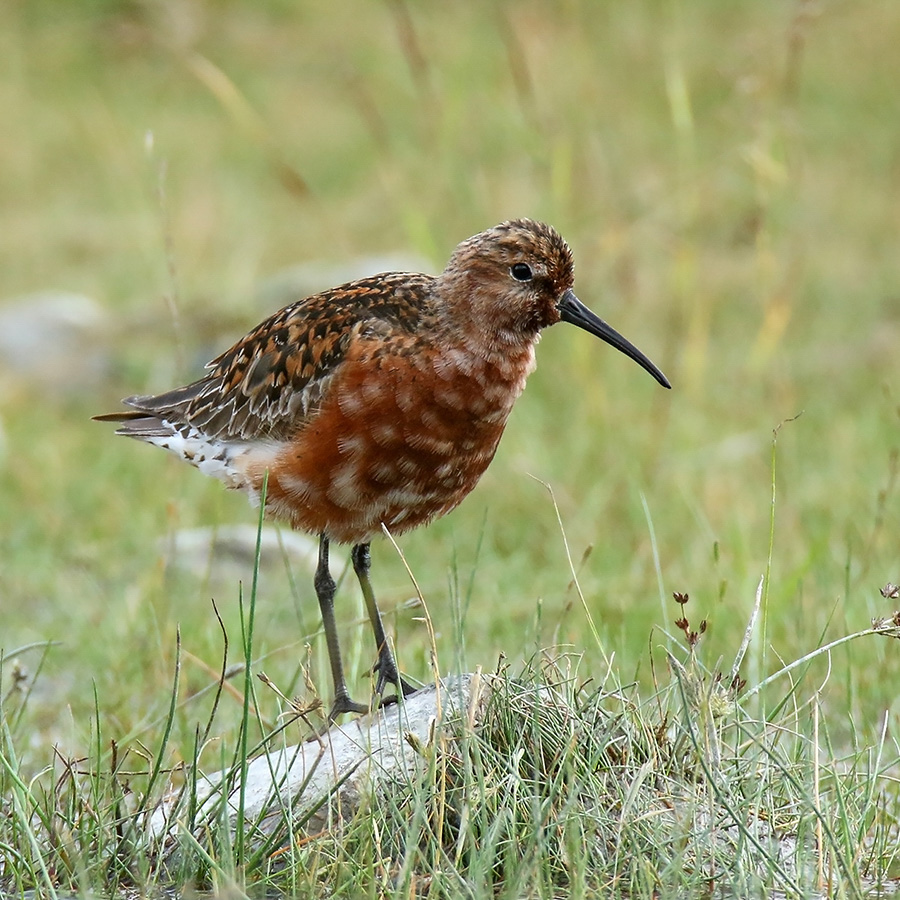Description:
Medium-sized rusty rufous to deep chestnut-red sandpiper with longish neck and legs, and long, decurved bill. Adult breeding has chestnut-red head and underparts. Adult non-breeding paler grey than Dunlin, with more distinct supercilium. Juvenile has strong supercilium, buff wash to breast, and buff fringes to upperparts.
Distribution:
Uncommon passage migrant through the north-western parts of Gilgit-Baltistan, very rare in Baltistan. Usually found near wetlands; including marshes, lakes, river banks, boggy areas and grasslands. From lowlands up to 3000m during passage migration.
Behavior:
Picks prey from mud or sand surface or probes in mud, regularly wading in shallow water; worms usually washed before being eaten. Diurnal and nocturnal. Feeds mainly on insects, including adults, pupae and larvae, especially of Diptera and beetles; also bugs and leeches. Occasionally seeds.
Photo Gallery:
Range & Occurrence:


Distribution Map of Curlew Sandpiper in Gilgit-Baltistan (Status: )
Seasonal Occurrence of Curlew Sandpiper
Resources:
Birds of Pakistan: Helm Field Guides (R. Grimmett & T. Inskipp)
The Birds of Pakistan (T. J. Roberts)
Birds of the Indian Subcontinent (C. Inskipp, R. Grimmett & T. Inskipp)
Birds of South Asia: The Ripley Guide (P. Rasmussen & J. Anderton)
Birds of India: Collins Field Guide (N. Arlott)
Handbook of the Birds of India and Pakistan (S. Ali & S. D. Ripley)
Handbook of the Birds of the World (https://www.hbw.com)
The Clements Checklist of Birds of the World, 6th Edition
iNaturalist BoGB (inaturalist.org/projects/birds-of-gilgit-baltistan)
Birds of Gilgit-Baltistan (http://fb.me/birdsgb)
*Gallery images on this page are shared from flickr.com, and are copyrighted to their respective creators or owners.

